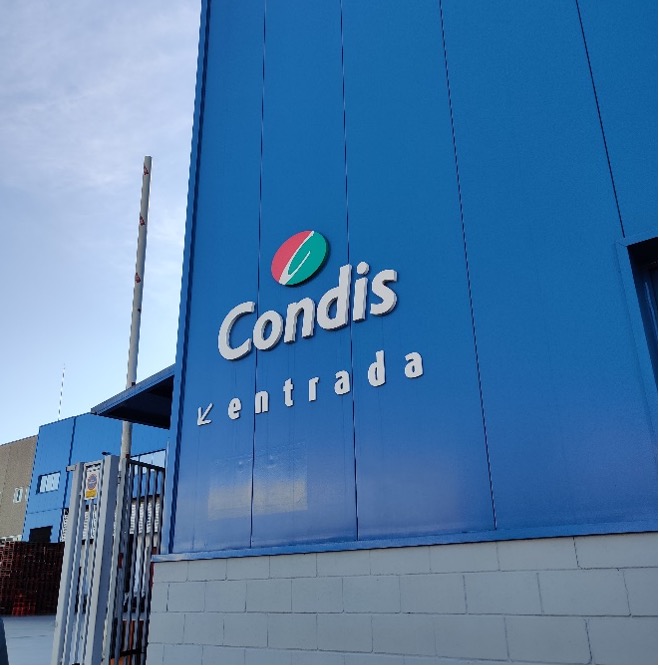In early April 2022, as part of the E2COMATION project partners, Condis, ACT OR, and STIIMA met physically at the offices of Condis’ distribution center located in Montcada i Rexaic, near Barcelona (Spain).
The intention was to leverage an on-site visit of the warehouse to enhance the continuation of some activities related to the Condis use case placed in WP6 of the project and related to the Decision Support System (DSS) for LCA-driven supply chain management.
The research contribution on the topic is to advance state of the art in integrated managing some key supply chain steps such as demand forecasting, stock management at the distribution center, and transportation optimization, both in terms of economics and sustainability.
At the beginning of the day, a briefing was held in the headquarters offices, where Condis kindly went through the main stages of the company’s history and showed the key figures. The day’s roadmap was then discussed, focusing on the topics of stock management, transportation optimization, and energy efficiency.
Later in the morning, there was a tour of the operational areas, such as the manual and automatic storage area, the refrigerated department, the inbound area, where goods arrive from Condis suppliers, and the outbound area, where orders are loaded onto vehicles and shipped to the stores. In each one of them, the main activities involved were investigated in detail: handling of products from receiving to dispatching (stock, picking, palletizer, depalletizer, stretch-wrappers, etc.), carried out both manually and automatically through an advanced system that takes advantage of sensor technology.
The partners discussed how mathematical optimization techniques being developed with the E2COMATION project can help Condis warehouse managers to optimize the overall flow of all product categories, with benefits in both manual and automated product handling. The smooth flow of materials avoids congestion, overstocking and stock-outs, which also has an impact on preventing bottlenecks in deliveries and order loading. From a sustainability perspective, excess product waste can be reduced, as well as energy consumption per individual product unit handled.
In the afternoon, Condis transportation managers explained how orders are planned for delivery during the day through the milk-run approach, assigned, and loaded onto vehicles. They also explained how they carry out order planning to take advantage of full loads. Special interest and recent activity of Condis has been the elaboration of how waste is sorted (for cardboard and plastic), recycled, and returned in roll containers to the distribution center. ACT OR, STIIMA, and Condis reviewed how E2COMATION can help the distribution center’s reverse supply chain to optimize return trips and maximize collaboration with third-party logistics companies.
The face-to-face visit provided an opportunity, in the closing meeting at the end of the day, to discuss all the pending issues of the project, which affect all modules and in particular those already in development such as the Inventory Optimization module and the Transportation Optimization module, and their interrelationships with sustainability.



